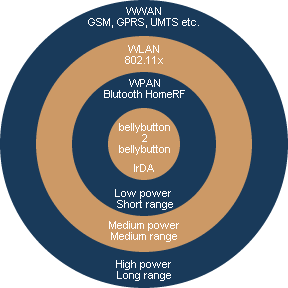|
Which
Way to Wireless Wonderland?
|
Leanard Boggio, who heads information and communications
initiatives for PriceWaterhouseCoopers in Vancouver, British Columbia,
maintains that wireless will take hold in the corporate/institutional
sectors before it makes it into the mass market.
In a recent global survey, A.T. Kearney, a Plano,
Texas based e-business consulting firm, reports that only 12% of
respondents intent to take advantage of mobile e-commerce, down
sharply from 32% , one year ago.
The report "A Rude Awakening for WAP Dreamers."
goes on to say: "The industry as a whole must act quickly
to reverse the alarming decline in Web purchasing intentions and
accelerate the evolution of the phone into a multi-purpose personal
tool." --- Good luck to you! Consumers see little value in
surfing the web on their PDAs, let alone trying to browse the Sears
catalog on the ridiculously tiny screen of a cell phone.
The sharing of "mission critical" data is
the highest and best use of wireless. Healthcare is not only poised
to take advantage of mission critical wireless data networking,
healthcare is leading the way!
There are several ways wireless technologies are being
introduced into Healthcare Information Management Systems.
The long and the short
of IT.

"B2B" Wireless Networking *

Chances are that you've already engaged in wireless
networking. Although you may not have thought of it in those terms.
Most of us have used, or at least played with, the infrared beaming
capabilities of our gadgets. If you've ever "beamed" an
application, game or an "electronic business card" to
a friend or colleague, you've already benefited from the wireless
revolution.
Infrared ( light waves of a lower frequency than human
eyes can perceive) beaming is an undoubtedly handy tool to have
incorporated in your PDA, but it has limited distance and transfer
rate (bandwidth) capabilities. Furthermore infrared is a "line
of sight" technology. For example, you have to point your gadget
directly your friends gadget before interesting things can happen.
Also infrared is almost always a "one to one" technology.
You can send data between your desktop computer and your laptop
computer but not to your laptop computer and your PDA at the same
time. Connecting multiple devices, with higher bandwidth and no
"line of sight" requirements, requires the introduction
of another short range wireless technology. Enter Bluetooth.
Wireless Personal Area Networking (WPAN)

Bluetooth systems create a Personal Area Network (PAN)
or "piconet" that may fill a room or may encompass no
more distance than that between your PDA in your pocket and the
PC/laptop in front of you.
Bluetooth is a radio-frequency standard. And as such
it neatly side steps the need for "line of sight". In
fact you don't have to think about it at all. Bluetooth doesn't
require you to do anything special to make it work. Bluetooth enabled
devices find one another and strike up a conversation without any
user input.
Bluetooth communicates on a frequency of 2.45 gigahertz,
which has been set aside by international agreement for the use
of industrial, scientific and medical devices (ISM). A number of
devices that you may already use take advantage of this same radio-frequency
band. Baby monitors, garage-door openers and the newest generation
of cordless phones all make use of frequencies in the ISM band.
Wireless Local Area Network (WLAN)

Location based wireless access is already reaping
benefits in our institutions. 802.11x networks are taking root in
hospitals, clinics and on university campuses. Tulane
University, has recently implemented the first wireless access
platform that utilizes the 802.11a standard to connect 80 buildings
on campus and Cedars
Sinai Medical Center has wired all its conference rooms, meeting
rooms and auditoria with wireless access points, using the wireless
802.11(b) standard. 802.11x offers true wireless broadband and is
steadily increasing in popularity with institutions and the public
in general.
Wireless Wide Area Networks (WWAN)

Handspring plans to deliver GPRS service at some point in the future
with it's PDA/phone, Treo line of "communicators". Initially
the Treo will ship only with GMS capabilities, but the company says
"Treo will fully exploit the benefits of GPRS networks"
when services become more widely available. This has the potential
of enhancing long-range data access on home visits by organizations
like, the VNA Home Health Systems in Santa Ana (VNAHHS), lead by
the mobile informatics innovator, Jeneane A Brian. Jeneane is currently
investigating the addition of wireless capabilities to her already
"mobile" team.
Go to page 3 for "Components
of a Wireless Network"
* NOTE: bellybutton 2 bellybutton
is not an official designation, we just feel it's descriptive ;-)
.gif)
|

![]()





